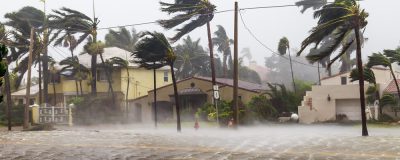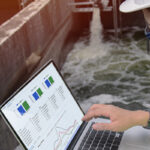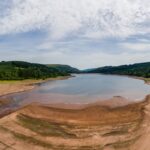In Brandenburg, Germany, the State Office for the Environment (LfU) is actively addressing water conflicts exacerbated by climate change-induced drought. The environmental agency faces the complex challenge of managing water resources for the competing Ucker and Havel sub-catchments, which share a common reservoir system consisting of the Hardenbecker Haussee, Küchenteich and Schumellensee lakes. This water management dilemma reveals the broader context of today’s water supply challenges and emphasises the crucial role of technology in assessing water balance for sustainable reservoir control.
We chat with Philipp Hunter, Senior Consultant of Civil Infrastructure from DHI’s office in Germany, on why the project team chose MIKE SHE to effectively manage reservoir water resources for LfU Brandenburg.
Q: Why was MIKE SHE chosen for this project?
Philipp: MIKE SHE functions as an integrated catchment modelling tool and helps us comprehensively assess various water components. It excels in representing hydrological processes, providing sophisticated evaluations of surface and groundwater availability. Several key features of MIKE SHE proved very beneficial. The bilateral coupling of surface water and groundwater bodies, providing a feedback mechanism absent in classical groundwater models, played a pivotal role. In MIKE SHE, the groundwater component is coupled in both exchange directions to the integrated 1D hydraulic model, representing rivers, lakes and controllable structures. So rising groundwater levels can trigger water levels to rise in the river system and consequently simulate the mutual influences.
Q. What sets MIKE SHE apart from other similar modelling tools for reservoir assessments?
Philipp: In typical rainfall-runoff models used in large-scale reservoir assessments, water flow occurs unidirectionally from groundwater to the river system without the possibility of rivers re-infiltrating into the surrounding aquifers. MIKE SHE’s more precise approach of bilateral coupling reveals the big advantage especially during low water periods, when the groundwater-to-surface exchange directions can vary spatially along certain river sections. A classical groundwater model with predefined water levels as boundary conditions would not be able to represent the dynamics of this project. The same limitation can be stated for typical rainfall-runoff models. Only an integrated catchment model like MIKE SHE can effectively simulate the highly dynamic interactions among individual water components.
Q: What were the key results and takeaways of this project?
Philipp: Our findings demonstrated that MIKE SHE is really precise in figuring out how much groundwater contributes to the overall surface water availability. For sustainable reservoir water control, we recommended gradually reducing outlet flow to manage discharge effectively. By providing continuous time-series and scenario analyses, we can ensure a sophisticated assessment of sustainable ecological minimum flow during dry years, e.g., from 2018 to 2020.
Implementing the recommendations ensured a more balanced water distribution to both subcatchments. This prioritisation will help to prevent some river sections from completely drying up, while minimising negative effects to other river stretches, which we identified could benefit from stabilising groundwater exfiltration.
Embracing tomorrow: Climate-resilient designs for water reservoirs
In the face of climate change, sustainable water management has never been more pressing. A pivotal aspect lies in comprehensively understanding and precisely evaluating the interplay between groundwater dynamics and surface water systems.
In conclusion, a paradigm shift is essential. Designing reservoirs based on higher-resolution assessments of water balance components is crucial in the era of climate change. With advancements in hydrological models and increased computational power, detailed assessments are not only possible but necessary for effective water reservoir management amid changing environmental conditions.








